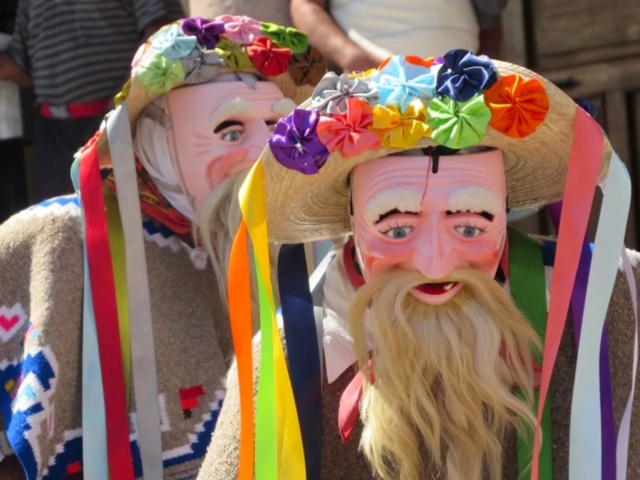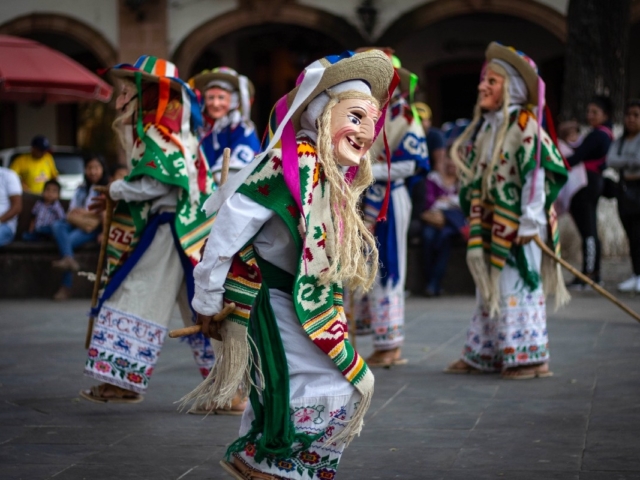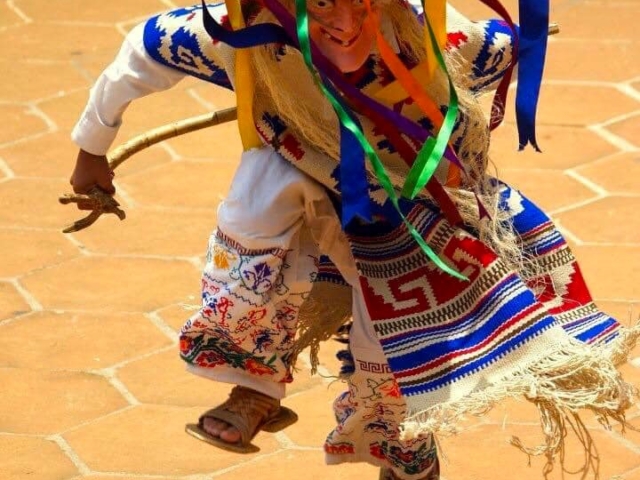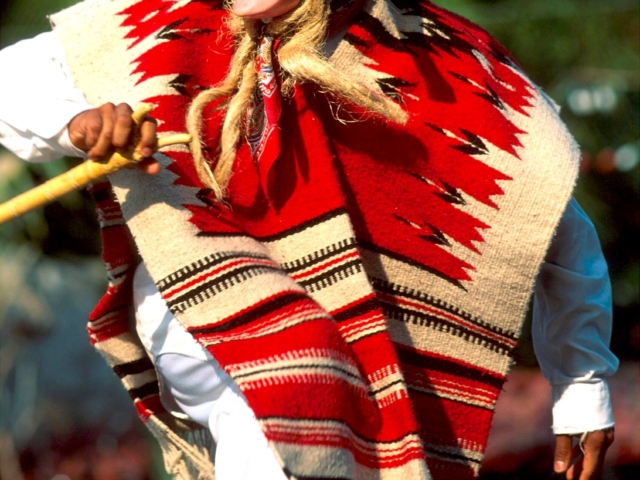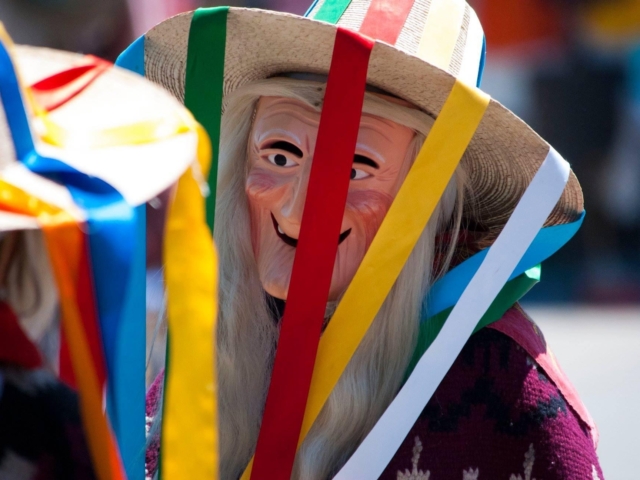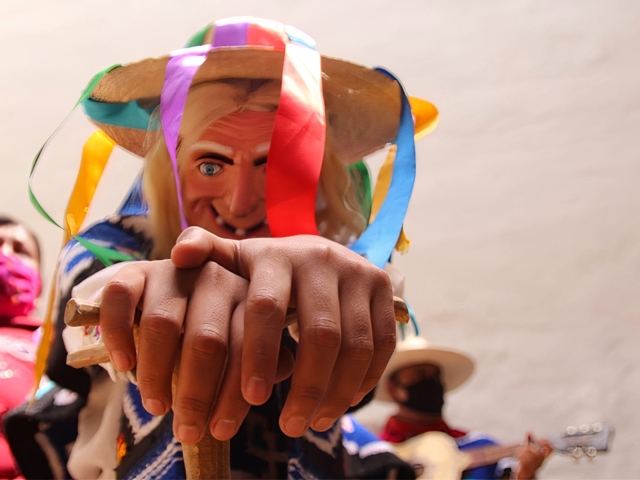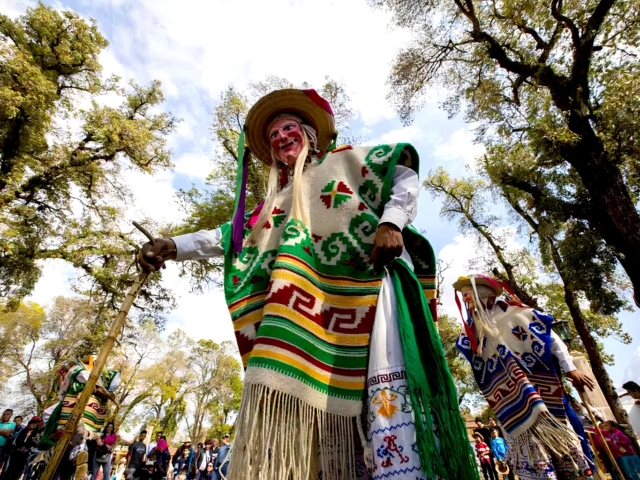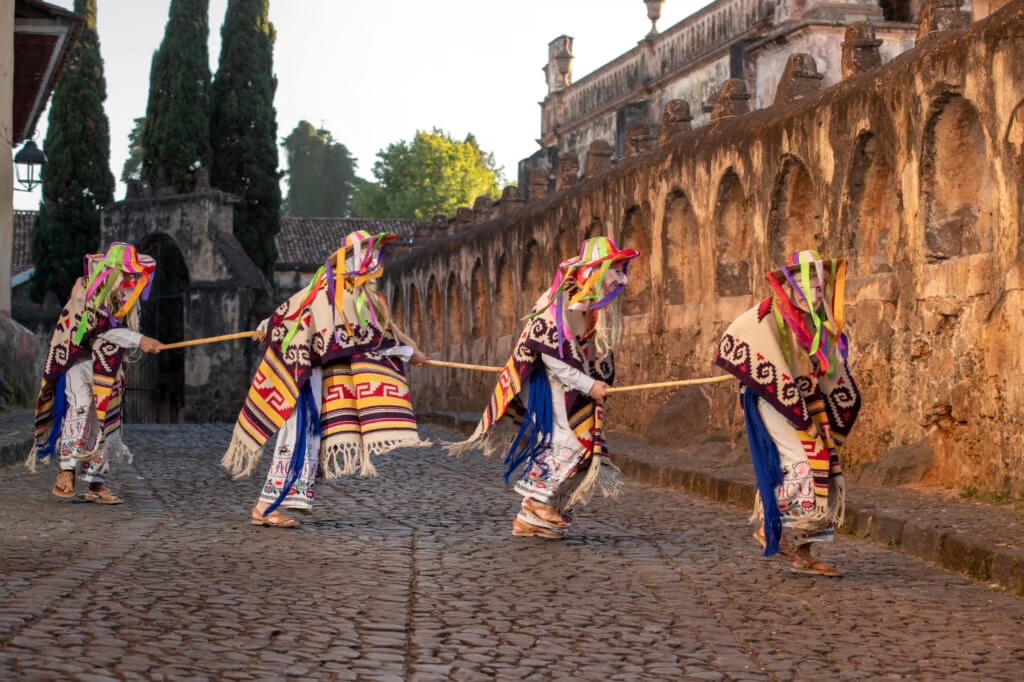
Adress
Jarácuaro, Michoacán, México.
GPS
19.560154721391, -101.67834877968
KNOW MORE PLACES
VISITA OTRAS LOCALIDADES
La Danza de los Viejitos es una tradición cultural profundamente arraigada en la región lacustre de Michoacán, México, especialmente en localidades como Jarácuaro, where it originates from, Tzintzuntzan and Pátzcuaro. Originally, in pre-Hispanic times, this dance was performed by the village elders to celebrate the changing of the seasons at the equinoxes and solstices, and they offered rituals to the sun god or the old god. With the arrival of the Spanish, the dance was transformed and began to represent the torture suffered by the Purépecha elders when they were forced to give up their treasures. Four dancers participate in the dance with sticks and masks that symbolize the elders, and originally one of them represented the new season while the others represented the past seasons. The ribbons that decorate the hats represent the rays of the sun, while the colors of the ribbons symbolize the varieties of corn: red, blue, yellow and white, essential in Mesoamerican culture.
The choreography combines humorous movements with intense footwork, and the dancers wear colorful outfits, masks of old men, and wooden-soled huaraches to accentuate the sound of their steps. The dance is accompanied by traditional music performed on string instruments such as guitar, violin, and double bass, playing pirekuas, the traditional Purépecha melodies.
The arrival of the Spanish transformed the dance into a caricature of the Spanish colonist who was considered less energetic than the indigenous people and aged faster. However, the dance remained a symbol of resistance and dignity, recalling the torture that the Purépecha elders suffered when they refused to hand over their people's treasures. Today, the Dance of the Old Men is a symbol of cultural identity and is internationally recognized for its color, symbolism and expressive stage performance. In addition, the dance is passed down from generation to generation, with many children in the region beginning to participate from a very young age.
Aún cuando ahora hay varias versiones de esta danza en diferentes lugares de la región purépecha, las cuales se distinguen por los bordados de los pantalones y colores de vestimenta, sitios icónicos como Jarácuaro son especialmente conocidos por esta tradición, y la mayoría de los niños de la región son iniciados como danzantes desde muy pequeños, siguiendo así el ejemplo de sus padres. La danza sobrepasa el folclor, teniendo un profundo sentido de identidad.
